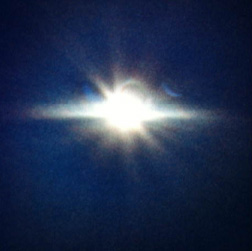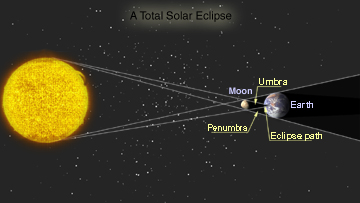Click on image for full size
Courtesy of NASA
Can an Eclipse Change Gravity? (Updated!)
News story originally written on September 20, 1999
It will take many more months before the final decision, but scientists are already studying the latest data. The last solar eclipse of the millennium served as a great opportunity to test a phenomenon found by Maurice Allais in 1954. Allais believed that a solar eclipse can affect Earth's gravity.
The scientists in charge of the experiment have received most of the data. Pendulums were set up in many countries, with some in the path of the eclipse and others not. Some of the early results are interesting.
Video cameras taped the pendulum movements before, during and after the solar eclipse. Although no change was viewed in the pendulums outside of the eclipse path, two different sites in Europe revealed exciting results. These researchers, which were inside the path of the eclipse, discovered a change in the pendulum's path. If the results are correct, then another mystery was just created. Why would gravity change only in the areas under the eclipse' path?
The results were taken by only looking at the video. The tapes will be studied frame by frame, which will allow scientists to analyze them very closely.
Koczor says much of the data still needs to be analyzed, but the current results have stumped the scientific community. "It's easy if we see nothing," Koczor says. But if there's something there, "it's a different ball game."









